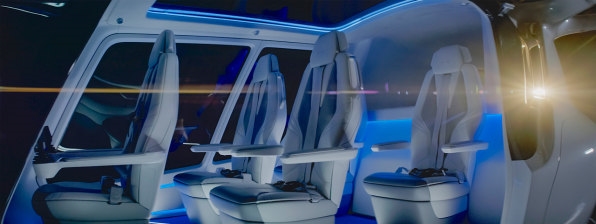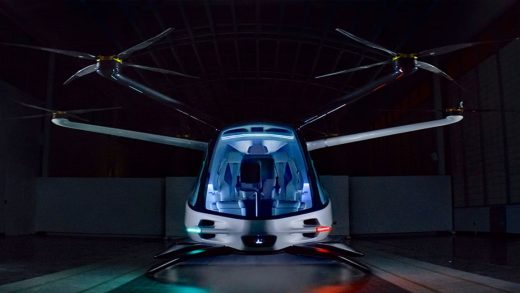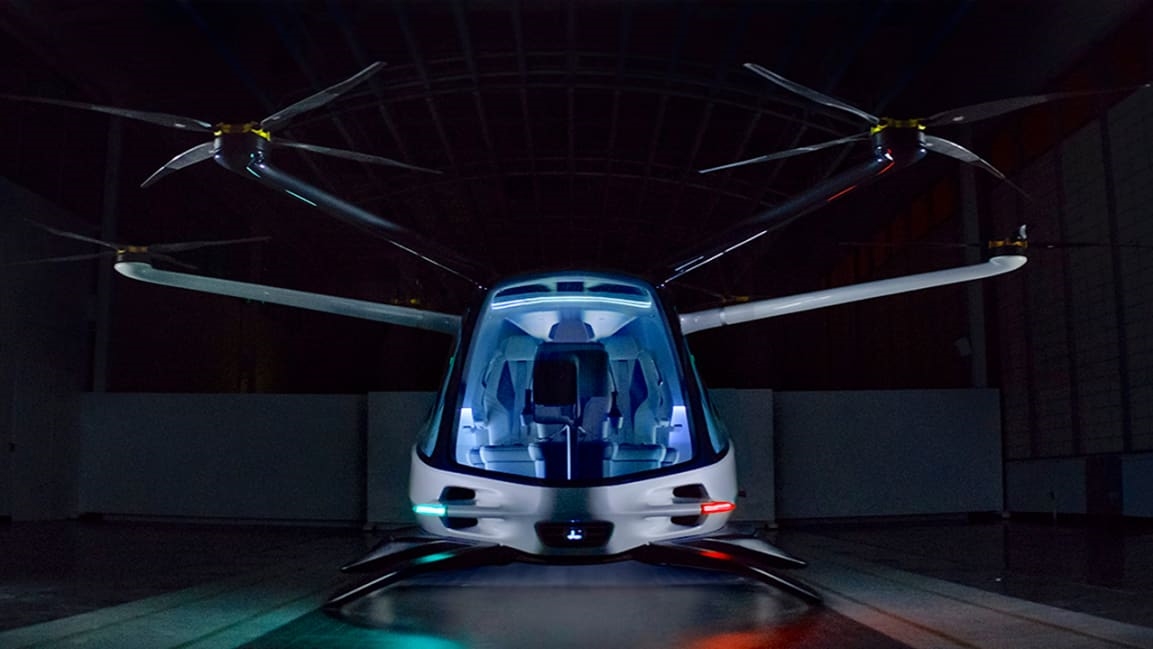We’re still waiting for flying cars. This startup says hydrogen power is the answer
The Jetsons has not been a good predictor of future technology. As many failed startups have illustrated the futility of building Rosie the Robot, so too have decades of laughable contraptions shown how far George Jetson’s flying car is from reality.
But that hasn’t stopped companies from Airbus to Uber from pouring resources into flying car services to transport people and goods across cities. They are pinning hope on cheap new electric propulsion technologies (courtesy of the drone industry) promising cleaner, quieter, and simpler craft than today’s gas guzzlers.
As Uber gears up for its third Elevate Summit on June 10, pushing the vision of battery-powered planes, a startup called Alaka’i Technologies proposes instead using hydrogen fuel cells to produce electricity. Alaka’i today debuted a full-size mockup of its four-passenger (plus pilot) helicopter-style electric craft called Skai–based on a design by BMW Group’s Designworks. What’s more: A working model will begin flight tests in the coming weeks.
Hydrogen dreams
“Hydrogen has a few hundred times the energy density of the best of lithium ion battery technology,” says NASA vet and Alaka’i board member Bruce Holmes. Alaka’i claims that Skai can carry 1,000 pounds of people or cargo for 460 miles at over 100 miles per hour.
That would blow away battery-powered competitors. Uber, for instance, is requiring would-be aircraft suppliers such as Boeing and Embraer to build planes that travel 60 miles per charge, albeit at a faster speed of up to 150 miles per hour.

[Photo: courtesy of Alaka’i Technologies]
Alaka’i also claims that fuel cells allow it to build a simpler craft–basically a six-rotor drone–that can fly through FAA certification. Craft running on Uber’s platform, or rivals from Airbus and Lilium, require a more complex design to save precious battery power. They transition from power-hogging, helicopter-style takeoff and landing to a more-efficient airplane configuration for the bulk of flight. With so much more power at hand, Skai can fly chopper-style the whole time.
Fast-track approval promises
In a regulatory world where just getting FAA approval on a modification to an existing airplane design can take five years, Alaka’i claims that Skai can get through the process in about a year. “All the components we have, it’s probably a quarter or less of a traditional aircraft,” says chief executive officer Steve Hanvey, a veteran of both the military and military contractors. He reckons that perhaps half of the FAA certification regulations won’t apply to Skai’s simpler design.
Another thing that could get Skai airborne sooner: It won’t be limited to taxi service. The company believes the first versions may fly for emergency services, like getting first responders or critical supplies to disaster sites–which could motivate fast-track approvals for those applications.
Reality check
As the efforts to build George Jetson’s robot have failed, evidence points to big barriers for his flying car. All these electric craft–be they powered by battery or hydrogen–are radically different contraptions from traditional planes and helicopters, posing a challenge for regulators trying to evaluate their safety.
Companies are hoping to lead the FAA on this process, advocating an approach in which the government sets overall safety goals that aircraft makers figure out how to achieve. But public sentiment may turn against industry-led regulation after the Boeing 737 Max crashes–possibly the result of the FAA’s light-touch evaluation of new software.
Then there’s hydrogen. While battery-powered electric cars are all over the road, fuel cell vehicles haven’t gotten beyond pilot projects. And all the same challenges faced by cars may carry over to planes. Electricity is almost everywhere in the U.S. and other developed countries. Hydrogen is not. Some states, like California, have committed to building out an infrastructure of fueling stations, however, and Alaka’i says it’s investing in vehicles to deliver, and even produce, the hydrogen where needed.
Hanvey points to the rapid growth of gasoline fueling stations in the early 20th century as reason for optimism. But the automobile quickly swept and transformed the country and world. Skai is a single, experimental aircraft in an industry with shaky prospects for success.
(26)



